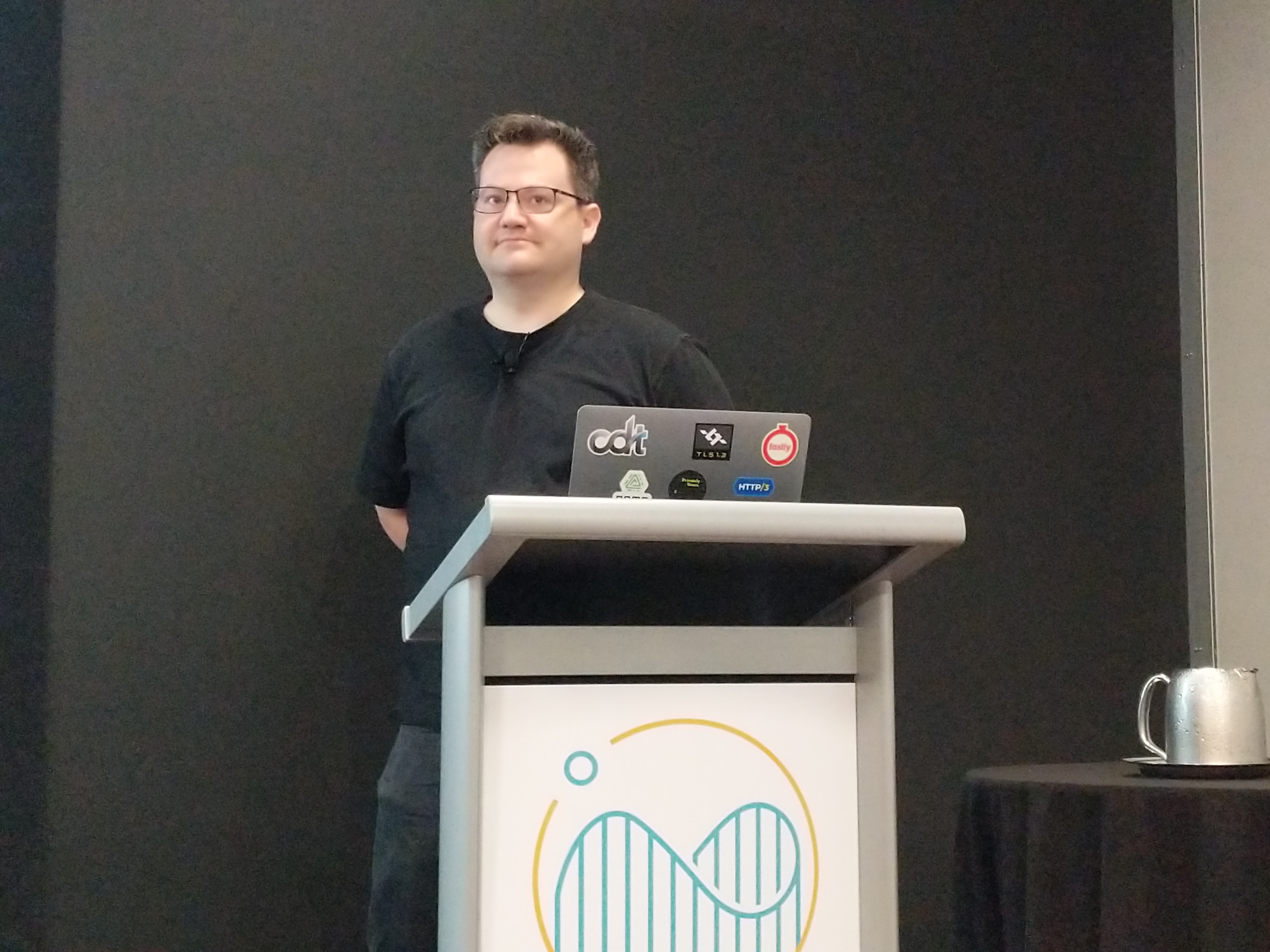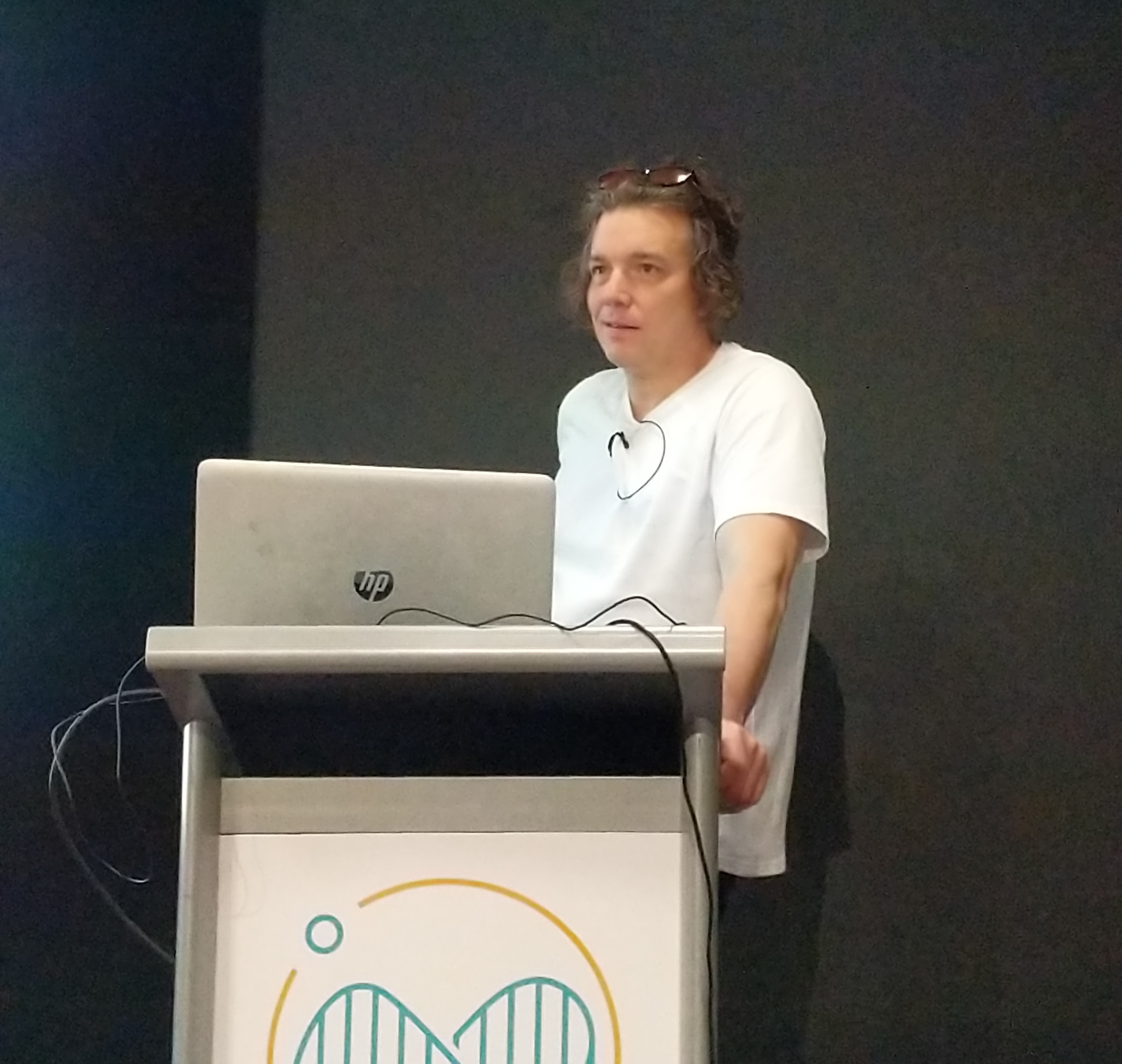The Fight to Keep the Watchers at Bay – Mark Nottingham
Disclaimer: I am not a security person, But in some sense we are all security people.
Why Secure the Internet
- In the beginning it was just researchers and a Academics
- Snowden was a watershed moment
- STRINT Workshop in 2014
- It’s not just your website, it’s the Javascript that somebody in injecting in front of it.
What has happened so far?
- http -> https
- In 2010 even major services, demo of firesheep program to grab cookies and auth off Wifi
- Injecting cookies in http flows
- Needed to shift needle to https
- http/2 big push to make encrypted-only , isn’t actually though browsers only support https.
- “Secure Contexts” cool features only https
- Problem: Mixed Content
- “Upgrading Insecure Requests” allow ad-hoc by pages
- HTTPs is slow – istlsfastyet.com
- Improvement in speed of implimentations
- Let’s Encrypt
- Around 85-90% https as of Early 2020
- Some people were unhappy
- Slow Satellite internet said they needed middle boxes to optimise http over slow links
- People who did http shared caching
- TLS 1.2 -> TLS 1.3
- Complex old protocol
- Implementation monculture
- Outdated Crypto
- TLS 1.3
- Simplify where possible
- encrypt most of handshake
- get good review of protocol
- At around 30%
- Lots of implementations
- Some unhappy. Financial institutions needed to sniff secure transactions (and had bought expensive appliances to do this)
- They ended up forkign their own protocol
- TCP -> QUIC
- TCP is unencrypted, lots of leaks and room for in-betweens to play around
- QUIC – all encrypted
- Spin Bit – single bit of data can be used by providers to estimate packet loss and delay.
- DNS -> DOH
- Lots of click data sold by ISPs
- Countries hijacking DNS by countries to block stuff
- DNS over https co be co-located by a popular website
- Some were unhappy
- Lots of pushback from governments and big companies
- Industry unhappy about concentration of DNS handling
- Have to decide who to trust
- SNI -> Encrypted SNI
- Working progress, very complex
- South Korea unhappy, was using it to block people
- Traffic Analysis
- Packet length, frequency, destinations
- TOR hard to tell. Looking at using multiplexing and fix-length records
- But the ends
- Customer compromised or provider compromised (or otherwise sharing data)
- Observations
- Cost and Control
- Cost: Big technology spends no obsolete
- Control: some people want to do stuff on the network
- We have to design tthe Internet to the pessimistic case
- You can’t expose application data to the path anymore
- Well-defined interfaces and counterbalanced roles
- Technology and Policy need to work togeather and keep each other in check
- Making some people unhappy means you need some guiding principles
- Cost and Control

LumoSQL – updating SQLite for the modern age – Dan Shearer
LumoSQL = SQLite + LMDB – WAL
SQLite
- ” Is a replacement for fopen() “
- Key/Value stores.
- Everyone used Sleepycat BDB – bought be Oracle and licensed changed
- Many switched to LMDB (approx 2010)
- Howard Chu 2013 SQLightning faster than SLQite but changes not adopted into SQLite
LumoSQL
- Funded by NLNet Foundation
- Dan Shearer and Keith Maxwell
What isn’t working with SQLite ?
- Inappropriate/unsupported use cases
- Speed
- Corruption
- Encryption
What hasn’t been done so far
- Located code, started on github.com/LumoSQL
- Benchmarking tool for versions matrix
- Mapped out how the keywords store works
- So different backend can be dropped in.
- Fixed bugs with the port and with lmdb
What’s Next
- First Release Feb 2020
- Add Multiple backends
- Implement two database advances
